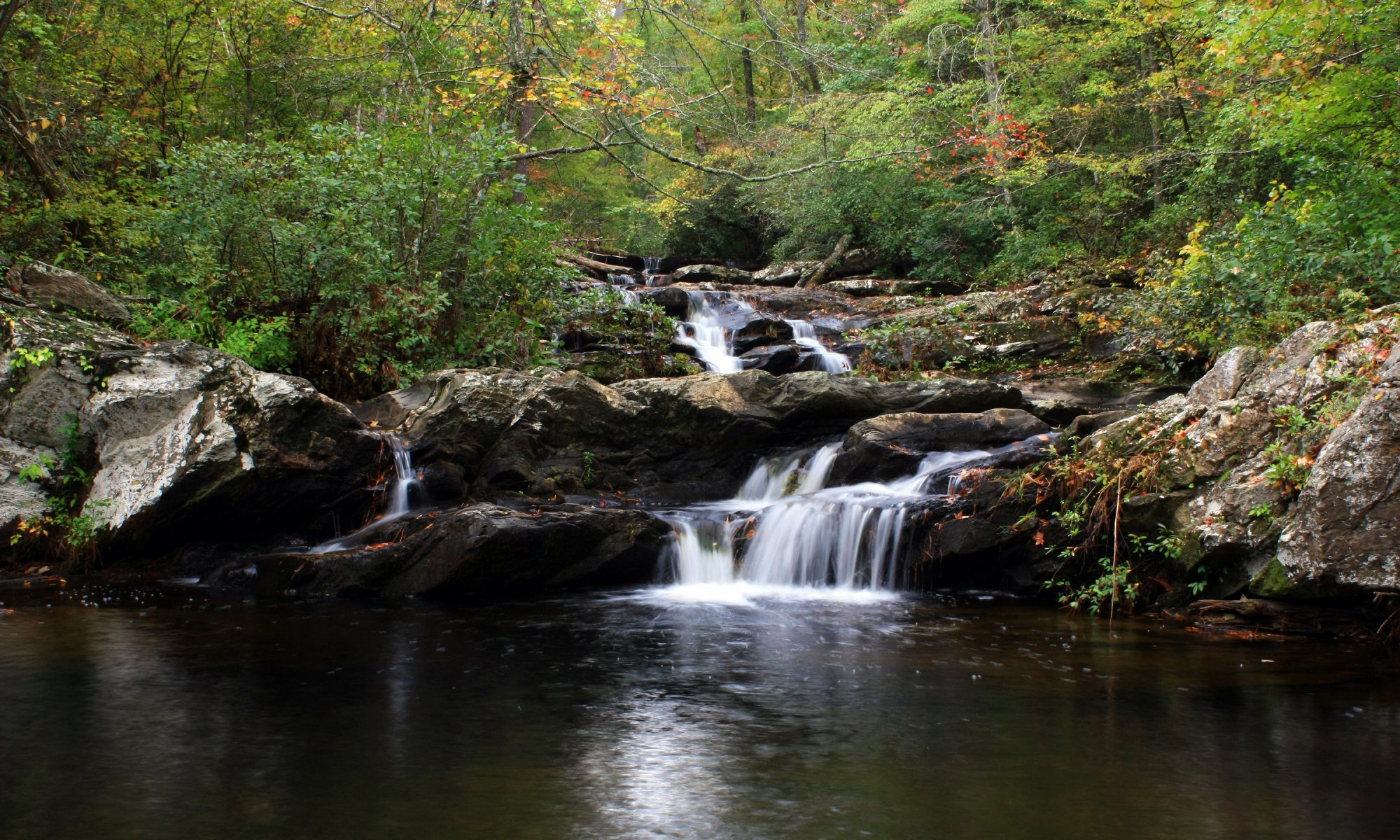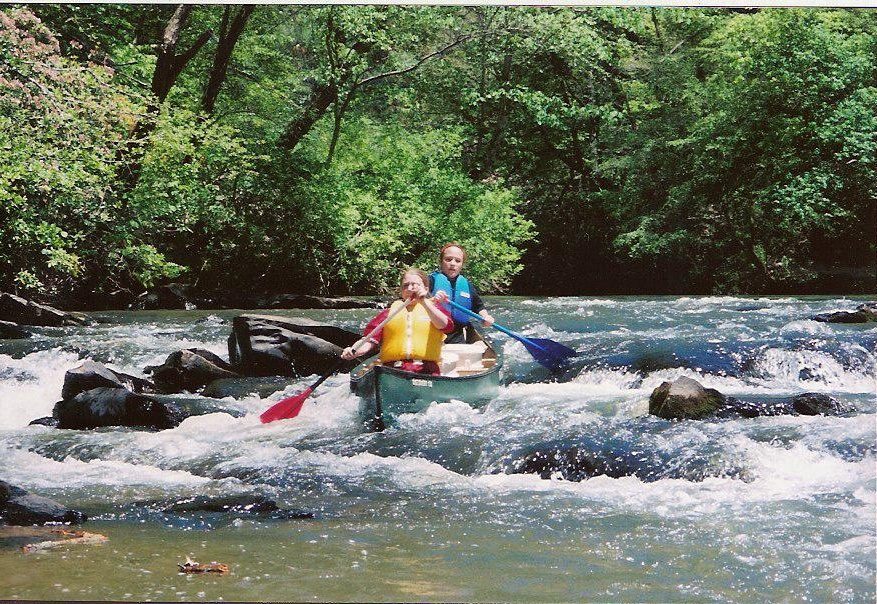From Paddle Magazine March 2019
A Secret Lesson of the River
By Mark Warren
Back in the 1980’s I received a most auspicious phone call from a schoolteacher who wanted private canoeing lessons. We began meeting on Saturdays, first on a pond and then graduating to slow moving water and finally to whitewater. She became a solid paddler and could hold her own in an open canoe in class three rapids. But, as it turned out, this was only the beginning. She wanted this same experience for her young students.
“I want my class involved in something real,” she said, “something outdoors. They need to experience all this.”
She was talking about a subject upon which I had always placed a very high value in anyone’s education. In working with both children and adults, I still consider this commodity one of the important contributions of whitewater canoeing. It’s the lesson of accountability.
So began a canoeing program that would last for decades in her Montessori school’s agenda. Every autumn and spring, she bussed 5th and 6th grade students from Atlanta to camp at Medicine Bow, my wilderness school in the mountains. There, as tandem teams, they learned the basic strokes and maneuvers on a pond until they were able to perform any number of balletic patterns using an English gate, a simple structure of two poles hanging over the surface of the water from a crossbar.
One such dance on water might go like this:
- From a starting position 15 yards from the gate, paddle right of the gate and come to a complete stop just past it.
- Sideslip past the gate to the left and stop.
- Reverse stroke just enough to clear the gate again and stop.
- Sideslip right to get in front of the gate and stop.
- Perform a half-spin clockwise, keeping the boat in place as if an axle runs vertically through the center of the boat all the way down into the mud below.
- Paddle in reverse through the gate (clean!) and stop.
- Spin counterclockwise 360º and stop.
- Return back through the gate to the starting place/finish line.
After mastering the course, these students invariably loved to be timed on the course. They kept begging for more runs, trying to better their times. There was, of course, a sense of competitiveness inherent with the use of a stopwatch, and any tandem team would revel in the joy of being the fastest. But there was another competitive theme at work here, too. Each team earnestly craved to better its own time. And each time a team did, everyone present experienced a moment of triumph.
There were always some tandem teams that showed signs of inner turmoil—usually one person trying to be domineering, even as he or she was often the culprit making the most grievous errors. Such frustration led to arguments . . . and sometimes to tears. This is why, on certain training days, I insisted that team members switch places in the canoe. In this way, each tandem member was introduced to his partner’s side of the paddling equation.
Often I would create a game using “robots.” For example, after giving the team an assigned course to follow on the pond, I surprised both paddlers by informing the person in the bow that she was now a “robot.” She was programed to perform a stroke only if her partner ordained it aloud. With each command given, only one stroke should be performed: “forward” or “draw” or “pry” or “forward sweep” or “reverse stroke,” and so on. Modifiers were acceptable: “small draw” or “giant reverse stroke” or “tiny pry,” etc.
However, the “robot” could not respond to any command that fell outside our technical vernacular. If the human in the boat yelled “Turn right! Turn right!” or “No, don’t do that!” . . . none of that computed for the “robot.” It was always amusing to watch one paddler scream, “No, go the other way! Go left!” All the while the “robot” partner remained passive with a big smile on his face.
Once a team had successfully negotiated such a course, the roles reversed, turning the former human into a “robot” and vice versa. As effective as these lessons were, I knew that their most powerful schooling would come from the river.
When finally their flatwater training was complete, the older trainees (the 6th graders) headed for moving water. As soon as they felt the current of the river humming beneath their knees, they knew that the rules had just changed in a big way.
The thing about current is this: it just doesn’t stop. No matter how much you might want a break, no matter how much you wish the world would stop for a few seconds so that you can get your bearings . . . the river keeps flowing. The students realized they had been placed on a mindless conveyor belt, and there was no switch to turn it off. This situation demanded action. A student eventually learned three alternative responses to an urgent navigational need: 1.) do nothing at all and hope for the best, 2.) follow the panicky instinct of reverse stroking, just like putting on the brakes in a car, or 3.) correctly employ the proper strokes that will resolve the problem.
The river quickly teaches its novice boaters that #1 is a silly choice. Moving water is indifferent to humans. It has no conscience or code of ethics or mercy. It is only water. #2 presents a surprising lesson to beginners: that slowing down in current sacrifices the paddlers’ ability to control the boat. These paddlers “putting on the brakes” will feel the river grab their boat like the brutish hand of a giant. In fact, going faster than the current makes a canoe easier to maneuver. #3, obviously, brings triumph. Welcome to the river.
In those teaching days the most common phrase I used on the river was this: “You’ve got to make it happen.” When we gathered on a sandy beach above a rapid that would test the group’s canoeing skills, I drew the riverine terrain in the sand, etching out the paths of the current, placing stones on my diagram to represent boulders out in the current. As the group discussed ideas about the most logical route to take, I waited for someone to mention the need to zig or zag at a certain point in the rapid. At that moment I brought out my little model canoe carved from wood and placed it on the diagram in the sand. I leaned one small stick against the bow and another against the stern, one on the right, the other on the left. These sticks represented the paddles.
“If you need to make that directional turn here,” I asked, “what must happen first?”
Someone answered, “You’ve got to point your boat that way.”
“Right,” I commended. “And how does this team do that?” I point at the model.
Everyone answered like a chorus, “Draw spin!”
I switched the sticks, reversing paddle sides. “How about now?”
“Pry spin!”
“Good. Then what?”
For a moment there was silence as faces frowned at the diagram. Then someone stated the obvious.
“You go there . . . in the direction you are pointing.”
“Yes, but how does that happen?”
Another pause. Every question I was asking seemed so simple that they were suspicious of a trick question.
“You just paddle forward,” someone finally contributed.
I made the moment dramatic by pointing my finger at this child as if he had answered the riddle of the Sphinx. “Yes!” I swiveled my arm to point out at the rapid. “But you’ve got to remember that out there on the water. You’ve got to remember that a canoe does not travel somewhere simply because you’ve pointed it that way. You have to make it happen. If you don’t, the current will take you the way that it’s going.”
This is a concept well worth driving home into students, because their experience with toy wagons, tricycles, skateboards, bicycles, sleds, and automobiles have taught them otherwise. In a car a driver turns the wheels (by way of a steering wheel), and the vehicle follows. The driver puts out no extra effort. It just happens. This repeated experience, I am convinced, brainwashes its young riders into thinking that going in a new direction is simply a matter of turning.
We spent our first day (of three consecutive days) on a beginner’s river with occasional class 1 and 2 rapids. It was a safe and gentle initiation to moving water. On day two we visited a river with a little faster current and more rapids. If a team made a poor showing in a certain rapid, they tugged their canoe upstream for a second chance, and now they had the advantage of familiarity. And that factor of eliminating the “unknown” from the equation was a big one. On their first try, the children sometimes did not grasp what they were getting into. On try number two, they were veterans.
On day three we returned to this same river, giving every team the advantage of its previous day’s experience. Everyone was eager to better his or her performance, especially where a team had missed an eddy turn or run a rapid not as well as planned. On such days the mountains rang out with celebration as young students fell in love with the river experience.
Perhaps the most satisfying part of these trips was watching the lessons of accountability take root in the paddlers. This was especially true with those problem tandem paddlers who argued and yelled at each other. They wanted to quit or change partners. But we could accommodate neither request. To quit would mean to leave a canoe behind and walk out. We couldn’t leave an expensive canoe on shore, and we couldn’t expect the angry team to keep up with us as they hiked out. Furthermore, we could not change team members. It was not fair to break up the smoothly working parts of other teams. There was only one solution: work it out.
Every single time this happened, the schoolteacher and I watched the troubled students face the inevitable. They had to work together as a team. The river would have it no other way. These were gratifying days for me. When we got off the river I watched the newly resolved partners smile and talk to each other about what they had accomplished. This scenario never failed, because there was no other choice. There was no other way to get down the river except by effective teamwork.
Even if these kids never got in another canoe or visited a river again, they were bound to carry the river’s lesson with them to be applied in other chapters of their lives. But, I am glad to report, most of these former students did return to the grand adventure of moving water and whispering shoals. I still get letters and emails from them, often telling me how they have introduced their own children to the river. And just like the river keeps flowing, so goes this beautiful lesson of accountability down through the ages.
Mark Warren directs his school, Medicine Bow, in the Appalachian Mountains of Georgia, where he teaches the primitive skills of the Cherokee. He was the 1998 U.S. National Champion open whitewater canoeist in slalom and wildwater combined. His series of books, Secrets of the Forest, contain hundreds of original activities for students who crave the knowledge of the past and for adult leaders who want to know how to engage their children in nature. Volume 4 of this series chronicles all of his teaching techniques in canoeing from lake to whitewater. View it at: www.secretsoftheforestbook.com

